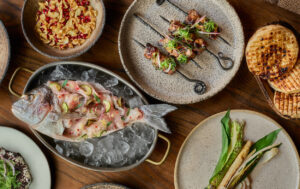How fine wine has informed the craft beer craze

Craft beer has become the latest fad in alcoholic drinks, and last year more than 300 breweries launched in the UK to accommodate for the boom in craft beer sales. Startups benefited and worked to put their own spin on the boozy beverage, with some small brands offering gluten-free beer, while one even launched a peanut butter ale.
The rise of craft beers has brought with it a number of new fans of the brew, including fine wine fans. This may be due to the fact that some of the best craft beer owes a lot to fine wine. Just as different grapes offer different notes and flavours, the ingredients and process behind brewing a good quality beer can be appreciated by experts in the field.
Some breweries are treating beer like wine
Over the past few years, craft breweries have been taking more and more inspiration from the wine industry, and even started housing their beer in larger bottles. While wines are required to age before being bottled and drank, beer is meant to be enjoyed fresh. But with a growing number of breweries cropping up with quirky new approaches, it’s no surprise some are offering beers aged in oak barrels, much like the process of ageing wine. Brooklyn Brewery for example recently released a strong fermented porter that has been aged for nine months in French oak red wine barrels, adding a subtle oak flavour to the taste.
According to fine wine experts Justerini & Brooks, the pinot noir grape (which is a classic red wine grape) has “wonderfully expressive aromas” and “develops truffle and game overtones with age”. These pinot noir grape characteristics make it perfect for breweries, such as Deschutes, which adds a dark cherry aroma to its beers. The brand’s Dissident beer is fermented and aged in pinot noir and cabernet oak barrels, giving the ale its characteristic taste with an indirect blend of wine.
Fine wine experts can understand the value of a good beer
Craft Beer & Brewing founder, John Bolton, recently suggested that wine drinkers “understand the value” of a good beer. Adam Avery of Avery Brewing Company agreed, adding that those who pay premium prices for vintage wine are more likely to appreciate the time and effort that goes into brewing the perfect tipple for craft beer fans. There are a few different factors that go into creating the ideal beer, including the ingredients and the way it is fermented, much like fine wines.
With the rising trend in drinking beer comes more knowledge about finding the perfect pint to match your meal. For years, wine has been treated as the diner’s beverage of choice, while breweries focused on boosting sales in pubs. Wine sommeliers were on board in restaurants to help consumers with the perfect food and wine pairing, and now it seems the beer industry is following suit. Beer sommelier is a rising trend in the fine-dining industry, and experts are working hard to promote the wide variety of beer as a match to food, such as pilsner with sushi, or lager and steak.
Beer hybrids are set to be the next big trend in consumer drinks
The idea of mixing beer and wine is not entirely new, and some breweries have opted to use strains of yeast used for wine during the fermentation process, to create a beer-wine hybrid drink ready for consumers. Meanwhile, some companies have chosen to brew with the “throwaway” parts of wine-making, such as the leaves and stems (known as the “must”). Dogfish Head brewery created the Midas Touch – a grain and grape hybrid made from a recipe that was recreated from alcohol residue found in King Midas’s tomb.
More breweries are experimenting with finding the perfect blend of beer with different flavours, including creating hybrid drinks. East London brewery Meantime Brewing teamed up with London coffee shop Nude Coffee Roasters to produce a collection of latte-beers, while a Scottish brewery launched a whiskey-aged beer.
As new flavours are continually being created and blended, it doesn’t look like the craft beer trend will slow down anytime soon. The rise in beer connoisseurs is paving the way for different flavours to be available in restaurants, it won’t be long until consumers are offered a beer menu rather than a wine one.
The editorial unit
























Facebook
Twitter
Instagram
YouTube
RSS